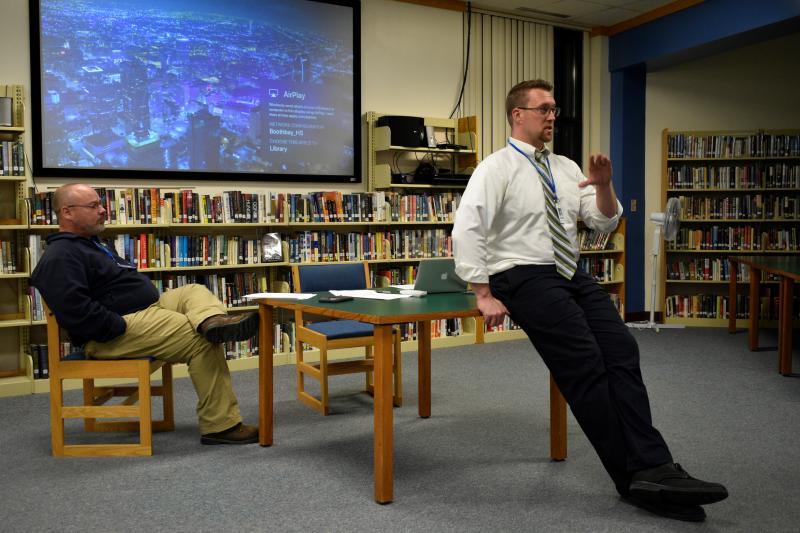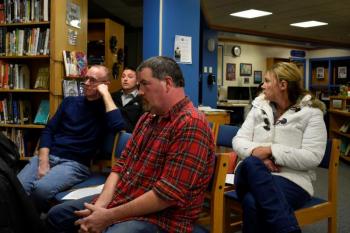Future of BRHS extracurriculars uncertain
Parents and coaches met with Boothbay Region High School Principal Dan Welch and Athletic Director Allan Crocker Nov. 14 to discuss lower turnout for sports and other extracurricular activities. Lower participation in after school programs is directly correlated with declining enrollment as participation in those programs has almost always stayed at 45-50%, said administrators.
“Smaller groups of students participating in extracurricular activities … expands to all kinds of things, although I suspect that the main focus of our conversation will center around sports,” said Welch. “This is not a new issue we're talking about. I think a lot of people know that over the last x-amount of years we've seen smaller and smaller teams in our schools,... We are struggling to field most of our teams.”
Lower participation is especially troublesome with sports, and wins and losses are not the most important part of sports, Welch said; student-athletes reap academic benefits.
Some teams’ lack of competitiveness can deter athletes who want to be in successful programs, said Welch. BRHS also only fields one junior varsity team, basketball, which leaves many younger and inexperienced athletes missing out or going head-to-head with bigger, more experienced ones.
“When you have seven or eight kids and four or five of them are freshmen and sophomores, you really get concerned about putting them on the field against teams that have a majority of seniors on the field.”
It also means some of the less experienced players are kept off the field or court. Welch cited the field hockey team as an exception, but the team was often one or two players short. If they had any less on the field, like the girls soccer team, they would most likely have been disqualified from the rest of the season, he said.
Once committed to a season and beginning a schedule, a team must meet all commitments throughout the season or face a two-year suspension from varsity classification. Appeals are not likely without compelling data, said Welch.
With about 260 students in the 2009-2010 season, Welch was in his first year as principal and watched 16 teams as they competed with robust rosters. This year, there are only 177 students at BRHS. “We had pictures full of students. Now when you look at them, you've got a row of three and a row of four.”
Participation in sports for winter and spring for is also uncertain. Athletic Director Allan Crocker said the boys junior varsity and varsity basketball teams, girls basketball, indoor track, outdoor track and swimming are safe if the signups reflect actual participation. Based on signups, baseball has one extra; boys lacrosse meets a full roster; boys and girls tennis are each down one athlete; and girls lacrosse is one athlete short of a full roster.
“Unfortunately, more often than not, we find that students will sign up for sports … and not come out,” said Welch.
Welch said there will likely be only 40-45 students per class for the foreseeable future which is only three or four years considering the class sizes of Boothbay Region Elementary School. Edgecomb and Southport participation is always uncertain, added Welch.
Welch, Crocker and the audience explored several ideas like requiring students to participate in sports and cooperatives with other schools, but the two administrators questioned the legality of imposing any requirements and explained that any co-op with another school needs more than just an agreement between schools. It also must meet all of the Maine Principals Association’s rules.
Said Welch, “I know almost all of you in this room are all very involved parents and very supportive. That is not the same for every student in this school. There are some students in this school who have significant barriers to participation. They can't get sneakers, they don't have athletic clothing, they never pick up a sport they can't afford ... they may be dealing with cyclical and generational poverty … their after school job may pay for food. I'm not kidding you. I deal with kids who deal with this on a daily basis. So, I just wonder what that would look like to those kids. I'm not saying there's no way around it, but that's where my mind goes.”

































